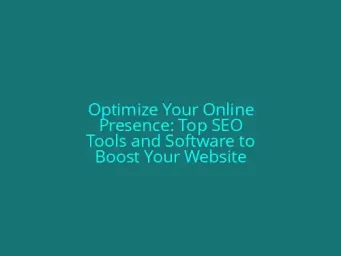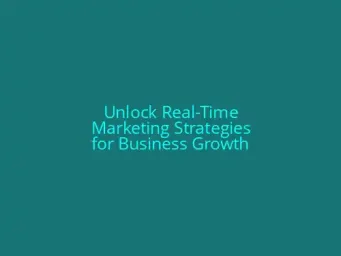](https://the-marketing-tutor.s3-web.eu.cloud-object-storage.appdomain.cloud/img/ciqDlEWJ8b-f.webp)
Boosting Website Conversions with Conversion Rate Optimization
**Section 1: Introduction to Conversion Rate Optimization (CRO)**\nConversion Rate Optimization (CRO) is the practice of increasing the percentage of users who perform a desired action on a website. This crucial process aims to enhance the user experience and maximize conversion rates by understanding user needs, pain points, and motivations. Effective CRO strategies involve a holistic approach that considers user-centric design principles, data-driven insights, and continuous iteration.\n### What is Conversion Rate Optimization (CRO)?\n---------------------------\nCRO is the practice of optimizing website elements to boost conversions. It involves identifying and addressing the factors that deter users from completing desired actions, such as filling out forms, making purchases, or subscribing to newsletters. By improving the user experience and streamlining conversion processes, businesses can increase the likelihood of visitors taking desired actions, ultimately driving revenue and growth.\n### Definition and Importance\nConversion rate optimization is essential for businesses seeking to enhance their online presence and maximize returns on digital investments. A well-executed CRO strategy not only improves conversion rates but also enhances the overall user experience, leading to increased customer satisfaction and loyalty.\n### Brief Overview of CRO Process\nThe CRO process typically involves several key steps. These include:\n1. **Identifying Important Conversions**: Determining the desired actions you want to target based on your business goals.\n2. **Analyzing the Conversion Funnel**: Conducting funnel analysis to identify areas where visitors drop off and addressing these pain points.\n3. **Gathering User Data**: Collecting data on user behavior, pain points, and motivations to create informed hypotheses.\n4. **Creating Hypotheses**: Formulating potential solutions based on insights gathered from user data.\n5. **Testing and Review**: Implementing and testing these solutions using A/B testing and continuous iteration to refine and improve the strategy.\n### Why CRO Matters\n-------------------\nBy focusing on CRO, businesses can:\n- **Improve User Experience**: Enhance the overall user experience by streamlining navigation, simplifying content, and reducing friction.\n- **Boost Conversions**: Increase the likelihood of visitors taking desired actions by addressing pain points and improving the conversion funnel.\n- **Drive Business Growth**: Maximize revenue and growth by optimizing website elements for conversions and improving the overall user experience.\n### Key Takeaways\n-----------------\n1. **Conversion Rate Optimization is Crucial**: CRO is vital for businesses seeking to enhance their online presence and maximize returns on digital investments.\n2. **User-Centric Approach**: A holistic approach to CRO puts people front and center by trying to understand what drives, stops, and persuades them to convert.\n3. **Continuous Iteration**: CRO is an ongoing process that requires continuous iteration and refinement to achieve optimal results.\nBy understanding and implementing these key principles, businesses can master the art of Conversion Rate Optimization and drive significant growth and revenue through enhanced conversion rates.**Section 2: Understanding Your Conversion Goals**\nUnderstanding your conversion goals is a crucial step in Conversion Rate Optimization (CRO). It involves identifying the types of conversions you want to achieve and setting specific goals. Here, well explore the types of conversions, setting conversion goals, and creating a conversion funnel.\n### Types of Conversions\nConversions come in two main categories:\n1. **Macro-Conversions**: These involve significant actions like purchases, subscriptions, or downloads. They are often the primary goals of a website and indicate a high level of user engagement.\n2. **Micro-Conversions**: These are smaller actions like form submissions, email sign-ups, or adding items to carts. They are important because they can indicate user interest and help you refine your conversion strategies.\n### Setting Conversion Goals\nSetting clear conversion goals helps you focus on what you want to achieve. Here are some steps to set your goals:\n1. **Identify Key Performance Indicators (KPIs)**: Determine the metrics that matter most to your business. Common KPIs include conversion rate, bounce rate, and average order value.\n2. **Create a Conversion Funnel**: Visualize your users journey from initial visit to conversion. This helps you identify pain points and areas for improvement.\n### Example of Conversion Goals\nConsider a e-commerce website selling clothing. Their macro-conversion goal might be to increase the number of purchases. Their micro-conversion goal could be to increase the number of visitors who add items to their cart. By setting these goals, they can focus on optimizing their website to achieve these outcomes.\n### Importance of Conversion Goals\nSetting clear conversion goals is vital because it helps you:\n1. **Focus your efforts**: By knowing what you want to achieve, you can prioritize your optimization strategies.\n2. **Track progress**: With specific goals, you can measure your success and adjust your strategies accordingly.\n3. **Improve user experience**: Understanding user needs and pain points helps you create a seamless user journey, increasing conversions.\n### Conclusion\nSetting conversion goals is a critical step in Conversion Rate Optimization. By understanding the types of conversions you want to achieve and setting specific goals, you can focus your optimization efforts and drive business growth.**Section 3: Strategies for Conversion Rate Optimization**\n### III. Strategies for Conversion Rate Optimization\nConversion Rate Optimization (CRO) involves a series of techniques designed to improve the likelihood of website visitors taking a desired action. Here are the strategies and best practices to enhance your websites conversions:\n#### **Analyzing User Behavior**\n1. **Understanding User Flow and Pain Points**:\n - Map user journeys to identify bottlenecks and areas where users drop off.\n - Use tools like heat maps, click-tracking, and user feedback to understand user behavior.\n2. **Using Analytics Tools**:\n - Leverage tools like Google Analytics to track user behavior and identify trends.\n - Set up conversion tracking to monitor specific actions.\n#### **Improving User Experience**\n1. **Streamlining Navigation and Content**:\n - Simplify menus and content to reduce clutter and improve readability.\n - Organize pages logically to facilitate easy access.\n2. **Enhancing Visuals and Mobile Responsiveness**:\n - Ensure mobile versions of pages are visually appealing and functional.\n - Use high-quality images and consider video content to engage users.\n#### **A/B Testing and Experimentation**\n1. **Conducting Tests**:\n - Identify key elements to test, such as CTAs, headlines, or form layouts.\n - Design and run A/B tests to compare different versions.\n2. **Interpreting and Acting on Test Results**:\n - Analyze test results to determine which version performed better.\n - Implement winning variations and iterate on further tests.\n### Effective Techniques for Conversion Rate Optimization\n#### **Optimizing Content for Conversions**\n1. **Creating Compelling Headlines and CTAs**:\n - Craft attention-grabbing headlines that highlight benefits.\n - Use clear and prominent CTAs to encourage action.\n2. **Using Social Proof and Trust Indicators**:\n - Showcase customer testimonials, ratings, and reviews.\n - Display security badges and trust seals to reassure users.\n#### **Streamlining Conversion Processes**\n1. **Simplifying Forms and Checkout Processes**:\n - Reduce the number of form fields to minimize friction.\n - Streamline checkout processes to minimize abandonment.\n2. **Reducing Friction and Distractions**:\n - Minimize pop-ups and intrusive elements.\n - Ensure a seamless, distraction-free user experience.\nBy implementing these strategies, you can significantly improve your websites conversion rates and drive more business growth.### IV. Effective Techniques for Conversion Rate Optimization\n#### Optimizing Content for Conversions\n1. **Compelling Headlines and CTAs**:\n - Use action-oriented language in headlines to grab users attention.\n - Ensure clear and concise CTAs that stand out visually and guide users through the desired action.\n2. **Social Proof and Trust Indicators**:\n - Incorporate customer testimonials, reviews, and ratings to build trust.\n - Highlight security measures and certifications to reassure users.\n3. **Mobile-Friendly Design**:\n - Ensure website designs are optimized for mobile devices, as most users access websites from mobile.\n - Use responsive design to adapt content and layout for different screen sizes.\n4. **Streamlining Navigation and Content**:\n - Organize content in a logical and easy-to-follow structure.\n - Minimize clutter and distractions to focus users on the conversion goal.\n5. **Reducing Friction and Distractions**:\n - Simplify forms and checkout processes by reducing steps and fields.\n - Remove unnecessary fields or elements to minimize user frustration.\n6. **Enhancing Visuals**:\n - Use high-quality images and visuals to make the content more engaging and attention-grabbing.\n - Ensure consistency in visual design to build a strong brand identity.\n7. **Content Placement**:\n - Place key conversion elements (e.g., CTAs) above the fold to maximize visibility.\n - Use clear and concise language in content to avoid overwhelming users.\nBy incorporating these techniques into your website design and content, you can significantly improve conversion rates and drive more business growth.
read more →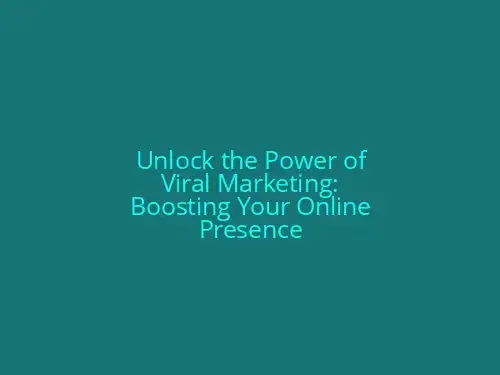
Unlock the Power of Viral Marketing: Boosting Your Online Presence
**1. Introduction to Viral Marketing**\nViral marketing is a sales technique that relies on the organic dissemination of information about a product or service through word of mouth or digital channels like social media and email. The ultimate objective is to inspire individuals to share a marketing message, leading to exponential growth in its reach. This approach can significantly expand a companys reach and customer base while being cost-effective compared to traditional advertising campaigns.\n### Key Insights\n- **Definition**: Viral marketing is a sales strategy that leverages organic, person-to-person or digital sharing of information about a product or service.\n- **Scope and Reach**: The Internet and social media have significantly expanded the scope and reach of viral marketing, with examples ranging from memes and shares to forwards and likes.\n- **Unpredictability**: While some marketing campaigns aim to deliberately trigger virality, the factors that make something go viral remain largely unpredictable.\n- **Cost-Effectiveness**: Once something goes viral, it can quickly and cost-effectively gain widespread popularity.\n- **Advantages**: Viral marketing offers benefits such as reaching a broader audience, generating buzz and excitement, and being more cost-effective than traditional advertising campaigns.\n### Illustrative Examples of Viral Marketing\n- **Hotmail**: Hotmail, a free web-based email service launched in 1996, encouraged users to spread the word by including an embedded advertisement and direct link in their outgoing messages, leading to rapid growth among user-based media companies.\n- **ALS Ice Bucket Challenge**: The ALS Ice Bucket Challenge, while existing prior to The ALS Associations involvement, was transformed into a global phenomenon through the organizations use of social media to raise awareness and generate donations, significantly increasing ALS awareness.\n### Characteristics of Viral Marketing Campaigns\nAll successful viral marketing campaigns share three essential components: the message, messenger, and environment. Each element must be optimally leveraged to create a successful campaign. Viral marketing campaigns can be initiated by businesses of any size and can stand alone or complement larger traditional campaigns.\nThese campaigns may employ various tools, such as videos, games, images, email, text messaging, and free products, to appeal to the emotions of users and raise awareness of a cause. Influencers, who possess a large network of followers, often play a crucial role in viral marketing efforts.\nSocial media acts as a force multiplier, enabling viral marketing campaigns to spread more quickly and cost-effectively than traditional marketing campaigns. The potential for significant traffic and mainstream media attention is a significant advantage. However, social media can also lead to misfires, as messages may be altered, misconstrued, or perceived as spam. Measuring the success of viral marketing campaigns can also be challenging.\n### Advantages and Disadvantages of Viral Marketing\n**Advantages**:\n- **Broader Audience**: Viral marketing allows companies to target consumers who might not be reached through traditional marketing campaigns, potentially expanding their customer base.\n- **Creativity and Buzz**: Companies can generate buzz and excitement by creating unique and shareable content, often resulting in positive word of mouth.\n- **Lower Costs**: Compared to traditional advertising campaigns, viral marketing is generally less expensive, as the cost is largely borne by the consumers who share the content.\n- **Rapid Growth**: The Internet enables content to be shared easily and quickly, potentially leading to exponential growth in reach.\n**Disadvantages**:\n- **Negative Word of Mouth**: Consumers are more likely to share negative news than positive news, which can harm a companys reputation.\n- **Difficulty in Measuring Success**: It can be challenging to determine the impact of viral marketing campaigns on sales and revenue.\n- **Privacy and Security Concerns**: If consumers perceive that a viral campaign will compromise their privacy or security, they may be less likely to share it, potentially damaging the companys reputation.\n### Conclusion\nViral marketing is a powerful tool for businesses to increase brand visibility and drive traffic to their websites. By understanding the key insights, examples, and characteristics of viral marketing campaigns, companies can effectively leverage this strategy to achieve their marketing goals while minimizing the potential drawbacks.**Understanding Viral Content**\nViral content is a crucial component of viral marketing. It refers to content that spreads rapidly and extensively through digital channels like social media, email, and online platforms. Here are some key characteristics of viral content:\n- **Helpfulness and Utility**: Viral content often offers helpful or useful information, such as life hacks, advice, or tips. This makes it valuable and engaging for readers, encouraging them to share it with others.\n- **Simplicity and Accessibility**: Viral content needs to be engaging and easy to understand. This involves using simple language, clear headings, and concise paragraphs to make the content digestible.\n- **Emotional Connection**: Viral content often evokes strong emotions such as inspiration, positivity, or even humor. This emotional connection helps readers remember the content and share it with others.\n- **Novelty and Surprise**: Viral content can be unexpected or surprising, making it stand out from other content. This might involve using unusual formats, such as videos or infographics, to present the information.\nWhy does viral content drive traffic and engagement?\n- **Social Sharing**: Viral content is designed to be shared. It encourages readers to share it on social media platforms, which helps expand its reach and drive traffic to the content.\n- **User Engagement**: Viral content engages users by offering valuable information or entertainment. This engagement can lead to increased user interaction, such as comments and likes, which further boosts the content’s virality.\n- **Search Engine Optimization (SEO)**: Viral content can improve SEO by increasing social signals and backlinks. This enhances the content’s visibility in search engine results, making it more likely to attract organic traffic.\nBy understanding these characteristics and the benefits of viral content, marketers can create effective strategies to drive traffic and engagement through their online presence.### **SEO Optimization for Viral Marketing**\n**1. On-Page SEO Factors for Viral Content**\n- **Title Optimization**: A focused and SEO-friendly title is crucial. It should convey the main idea and include relevant keywords.\n- **High-Quality Images and Videos**: Include high-quality images and videos to enhance reader engagement and optimize them by including descriptive alt text and filenames.\n- **Headings and Subheadings**: Use headings, subheadings, bullet points, bolded text, etc., to organize content and improve readability.\n- **Meta Descriptions**: Write concise and descriptive meta descriptions that accurately summarize the content and encourage readers to click through.\n### **Keyword Research for Viral Content**\n- **Conduct Comprehensive Keyword Research**: Identify relevant keywords and phrases that your target audience uses when searching for information on your topic.\n- **Use Keyword Tools**: Utilize tools like Google Keyword Planner, Ahrefs, or SEMrush to find high-traffic keywords and phrases.\n- **Optimize for Long-Tail Keywords**: Focus on long-tail keywords with lower competition and higher conversion rates.\n### **Optimizing Images for Viral Content**\n- **Image Optimization**: Optimize images by including descriptive alt text and filenames that include target keywords.\n- **High-Resolution Images**: Use high-resolution images to ensure they appear clear and crisp on various devices.\n- **Image Compression**: Compress images to reduce file size and improve page load times.\n### **Conclusion**\nBy incorporating these SEO optimization strategies into your viral marketing efforts, you can increase the visibility and reach of your content, driving more traffic and engagement to your website. Remember to consistently monitor and adjust your SEO efforts to ensure long-term success.**4. White Hat Link-Building Techniques**\nWhite hat link-building is a Search Engine Optimization (SEO) strategy for increasing the number of high-quality backlinks to a webpage. These links are crucial for improving page rank and website visibility. Here are some effective white hat techniques to achieve this:\n### Broken Link Building\nIdentify broken links on third-party websites that are relevant to your content. Reach out to the website owners and offer to replace the broken links with working links to your webpage. This technique enhances link quality and also helps improve user experience.\n### Quality Guest Blogging\nContribute well-researched, high-quality content to reputable websites. Include a link to your webpage in the author bio or within the content. Focus on relevance and value to establish credibility and encourage other website owners to link back to your content.\n### Creating Linkbait Content\nProduce content that is informative, entertaining, or thought-provoking. This type of content is more likely to be shared and linked to by other websites, thereby increasing your backlink profile.\n### The Skyscraper Technique\nResearch popular content on a specific topic and create a more comprehensive, higher-quality version. Share your content on social media and invite influencers to share it as well. This technique helps attract links from authoritative sources.\n### Claiming Links from Stolen Images\nSearch for your images on other websites and claim the links if they are being used without proper attribution. This technique helps you reclaim lost links and maintain a clean backlink profile.\nBy employing these white hat techniques, you can increase the quality and quantity of backlinks to your webpage, ultimately improving your SEO performance and online presence.
read more →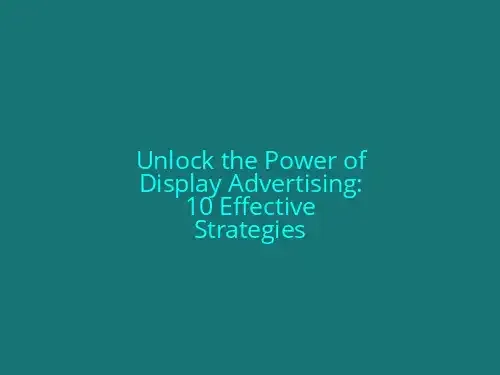
Unlock the Power of Display Advertising: 10 Effective Strategies
### Title and URL\n1. **Title:** Unlock the Power of Display Advertising: 10 Effective Strategies\n2. **URL:** display-advertising-strategies\n### Meta Description\n1. **Meta Description:** Discover the top strategies and techniques to maximize your ROI and reach your target audience effectively through display advertising.\n### Article Outline\n#### Introduction\n1. **What is Display Advertising?**\n - Definition and explanation of display advertising\n - Importance of display advertising in digital marketing\n#### Key Strategies for Display Advertising\n2. **Targeting the Right Audience**\n - Demographic targeting\n - Interest-based targeting\n - Behavioral targeting\n3. **Choosing the Right Ad Format**\n - Image ads\n - Video ads\n - Interactive ads\n4. **Optimizing Ad Placement**\n - Choosing relevant websites and platforms\n - Ad placement on social media\n5. **Measuring and Improving Ad Performance**\n - Tracking metrics (CTR, CPC, CPA)\n - A/B testing and ad optimization\n6. **Budgeting and Cost Control**\n - Setting a budget for display advertising\n - Cost management strategies\n#### Conclusion\n7. **Conclusion and Next Steps**\n - Recap of key strategies\n - Tips for implementing display advertising effectively### **Key Strategies for Display Advertising**\n**2. Targeting the Right Audience**\nDisplay advertising is all about reaching the right people with the right message. Here are the key strategies to target the right audience:\n1. **Demographic Targeting**: Define your audience by age, gender, location, and other demographic details.\n2. **Interest-Based Targeting**: Target users based on their interests, hobbies, or behaviors.\n3. **Behavioral Targeting**: Target users who have shown similar behaviors or actions online.\nThese strategies help you show your ads to people who are most likely to be interested in your products or services. This ensures that your ads are seen by the right audience at the right time, increasing the chances of conversions and ROI.\n### **Choosing the Right Ad Format**\nThe ad format you choose can significantly impact the effectiveness of your display advertising campaign. Here are some popular ad formats:\n- **Image Ads**: Simple yet effective, image ads are used to grab attention and convey a message quickly.\n- **Video Ads**: Engaging and interactive, video ads can showcase products in a more dynamic way.\n- **Interactive Ads**: Rich media ads that use video, audio, and clickable elements to enhance user experience.\nEach format serves a different purpose, and its essential to choose the one that best aligns with your marketing goals and target audience.\n### **Optimizing Ad Placement**\nAd placement is crucial in display advertising. Here are some key strategies:\n- **Choosing Relevant Websites and Platforms**: Place your ads on websites and platforms where your target audience is most likely to be.\n- **Ad Placement on Social Media**: Use social media platforms like Facebook, Instagram, or LinkedIn to reach specific demographics and interests.\nBy optimizing ad placement, you can maximize your ad visibility and reach the right audience more effectively.\n### **Measuring and Improving Ad Performance**\nTracking performance is vital in display advertising. Here are some key metrics to monitor:\n- **Click-Through Rate (CTR)**: Measure how many users click on your ads.\n- **Cost Per Click (CPC)**: Track how much you spend for each ad click.\n- **Cost Per Action (CPA)**: Monitor how much you spend for each conversion or action.\nRegularly monitoring these metrics and making adjustments can help improve your ad performance and ROI.\n### **Budgeting and Cost Control**\nEffective budgeting and cost control are essential in display advertising. Here are some strategies:\n- **Setting a Budget**: Determine how much you want to spend on your display advertising campaign.\n- **Cost Management Strategies**: Use strategies like frequency capping to control ad spend and avoid overspending.\nBy setting a budget and managing costs effectively, you can ensure that your display advertising campaign stays within budget and delivers the desired ROI.### Section 3: Keywords and Variations\n- **Primary Keyword:** Display Advertising\n- **Secondary Keywords:** digital marketing, target audience, ad format, ad placement, ad performance, budgeting, cost control\n- **Long-Tail Keywords:** display advertising strategies, display advertising examples, display advertising best practices, display advertising tips\nThese keywords and variations will help you optimize your article for search engines and provide a comprehensive understanding of display advertising among your readers.### Key Strategies for Display Advertising\n#### 1. **Targeting the Right Audience**\n* **Demographic Targeting**: Focus on specific demographics like age, gender, or location to reach your target audience.\n* **Interest-Based Targeting**: Target users based on their interests, hobbies, or online behaviors.\n* **Behavioral Targeting**: Focus on users who have shown specific behaviors online, such as visiting your website or engaging with your content.\n#### 2. **Choosing the Right Ad Format**\n* **Image Ads**: Use high-quality images to grab attention and communicate a message.\n* **Video Ads**: Utilize engaging videos to convey a message and capture viewer attention.\n* **Interactive Ads**: Incorporate interactive elements like games, quizzes, or surveys to engage users.\n#### 3. **Optimizing Ad Placement**\n* **Choosing Relevant Websites and Platforms**: Select platforms and websites where your target audience is likely to be active.\n* **Ad Placement on Social Media**: Utilize social media platforms like Facebook, LinkedIn, or Instagram to reach your target audience.\n#### 4. **Measuring and Improving Ad Performance**\n* **Tracking Metrics**: Monitor metrics such as click-through rates (CTR), cost-per-click (CPC), and cost-per-action (CPA) to evaluate ad performance.\n* **A/B Testing and Ad Optimization**: Regularly test different ad variations and optimize ad performance to maximize ROI.\n#### 5. **Budgeting and Cost Control**\n* **Setting a Budget**: Determine a budget for your display advertising campaigns to ensure effective cost management.\n* **Cost Management Strategies**: Utilize cost-per-action (CPA) bidding, cost-per-thousand impressions (CPM) bidding, or cost-per-click (CPC) bidding to manage costs effectively.\nBy following these strategies, you can effectively utilize display advertising to increase brand visibility, drive traffic, and boost conversions.
read more →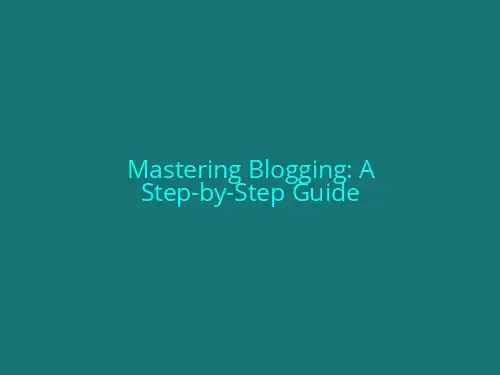
Mastering Blogging: A Step-by-Step Guide
**Section 1: Keyword Research and Brainstorming**\nTo create a well-structured and SEO-optimized article outline for the keyword Blogging, follow these steps:\n1. **Keyword Research and Brainstorming**:\n - Use tools like HubSpot’s Blog Ideas Generator or SEMrush to gather related keywords and their search volumes.\n - Brainstorm topics and subtopics related to Blogging, such as:\n - Benefits of blogging\n - Types of blogging (e.g., personal, professional, niche)\n - Blogging platforms\n - SEO for blogging\n - Content creation strategies\nThis step helps you gather relevant keywords and generate topics that are closely related to the main topic Blogging. By doing so, you ensure that your content is well-organized and optimized for search engines.**Article Structure**\n### **Introduction**\n- **Introduction to Blogging** \n - Brief overview of blogging and its importance\n - Purpose of the article\n### **Section 1: Benefits of Blogging**\n- **Increased Visibility**\n - Explanation of how blogging increases visibility\n - Example or case study\n- **Establishing Authority**\n - Discussion of how blogging helps establish authority\n - Real-life example or case study\n- **Generating Leads**\n - Explanation of how blogging generates leads\n - Example or case study\n### **Section 2: Types of Blogging**\n- **Personal Blogging**\n - Explanation of what personal blogging entails\n - Examples\n- **Professional Blogging**\n - Explanation of what professional blogging entails\n - Examples\n- **Niche Blogging**\n - Explanation of what niche blogging entails\n - Examples\n### **Section 3: Blogging Platforms**\n- **WordPress**\n - Explanation of WordPress features\n - Comparison to other platforms\n- **Blogger**\n - Explanation of Blogger features\n - Comparison to other platforms\n- **Other Platforms**\n - Explanation of other popular platforms\n - Comparison to WordPress and Blogger\n### **Section 4: SEO for Blogging**\n- **Importance of SEO**\n - Explanation of SEO importance in blogging\n - Tips for optimizing blog posts\n- **Keyword Usage**\n - Explanation of keyword usage for SEO\n - Tips for using keywords naturally\n- **Meta Descriptions**\n - Explanation of meta descriptions\n - Tips for writing effective meta descriptions\n### **Section 5: Content Creation Strategies**\n- **Planning**\n - Explanation of planning strategies\n - Tips for planning effective blog posts\n- **Writing**\n - Explanation of writing strategies\n - Tips for writing engaging blog posts\n- **Editing**\n - Explanation of editing strategies\n - Tips for editing blog posts effectively### Article Outline: Creating an SEO-Friendly Blogging Content Outline\nTo create a well-structured and SEO-optimized article outline for the keyword Blogging, follow these steps:\n#### 3. **Meta Description**\n- Use a short, descriptive summary (1-2 sentences) that includes the main keyword.\n- Example meta description: Discover the benefits of blogging and learn how to create engaging content that drives traffic and boosts your online visibility.**Section 4: SEO for Blogging**\n### Importance of SEO in Blogging\nSEO (Search Engine Optimization) plays a crucial role in blogging as it helps your content appear in search engine results and increases visibility. This section will cover the importance of SEO in blogging and provide tips on optimizing blog posts for search engines.\n### Optimizing Blog Posts for Search Engines\n1. **Keyword Usage**:\n - Use the main keyword (Blogging) naturally throughout the article.\n - Incorporate related keywords and synonyms to avoid keyword stuffing.\n - Include them in headers and body content.\n2. **Meta Descriptions**:\n - Write a short, descriptive summary (1-2 sentences) that includes the main keyword.\n - Example meta description: Discover the benefits of blogging and learn how to create engaging content that drives traffic and boosts your online visibility.\n3. **Header Tags**:\n - Use header tags (H2, H2, H3, etc.) to structure and highlight important keywords.\n - Ensure that header tags are descriptive and include the main keyword.\n4. **Content Quality and Readability**:\n - Ensure the content is high-quality, engaging, and informative.\n - Use headings, subheadings, and short paragraphs to improve readability.\n5. **Internal Linking**:\n - Link to other relevant articles on your website to improve user experience and internal linking.\n - Use descriptive anchor text for internal links.\n6. **Image Optimization**:\n - Use descriptive alt text for images.\n - Include relevant images and infographics to enhance the content.\nBy following these SEO tips, bloggers can improve their contents visibility, drive organic traffic, and establish authority in their niche.
read more →